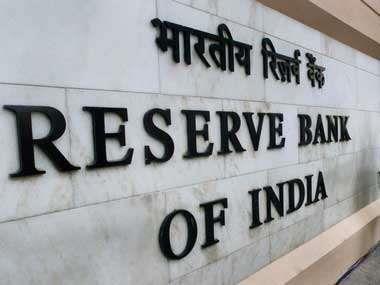February 1, 2015
Is there still a surprise element in the credit policy to be announced by the RBI this week?

On the face of it the answer is probably no, as the mid-term lowering of rates has set to rest speculation on whether the RBI is convinced that inflation has come down and will remain at the current lower level.
February 1, 2015
Is there still a surprise element in the credit policy to be announced by the RBI this week?

On the face of it the answer is probably no, as the mid-term lowering of rates has set to rest speculation on whether the RBI is convinced that inflation has come down and will remain at the current lower level.
Considering that there has been no new information that has come in on the domestic front and all the concerned economic variables are stable, prima facie, there is little reason to expect a further cut in rates. Unless, of course, the idea was to cut the rates by 50 bps in two tranches, the policy should be status quo.
There has been no significant external development as such, though the ECB has now committed to injecting liquidity for the next 18 months of the order of 1.1 trillion euros. This was actually known in advance though the ECB has now specifically mentioned the amount and the phasing of the same.
The Fed is expected to increase rates mid-2015 which is also a known action. The rupee has also been largely stable after the severe distortion caused by the Russian crisis, but not it appears that the market has already taken in this information.
There is little reason now to believe that the rupee will deviate widely from the range of 60-62/$. And given that there has been news of the RBI picking up dollars in the market; it does appear that this range looks comfortable for the central bank.
Therefore, the policy is likely to not radically change expectations and a further rate cut would be good for sentiment. Liquidity too is quite comfortable given that bank credit is yet to pick up and the government borrowing programme is very much under control.
With the FM assuring the markets that the fiscal targets are going to be attained this year, there is little fear of overshooting of the borrowing programme. The policy will have the ubiquitous statement on how critical the Budget will be for the financial sector as it would largely guide the allocation of liquidity in the next financial year.
While the direction of rate cuts is clear, the spread of these actions during the course of the year would play a critical part in creating expectations for investors especially those who have to lock their interest costs when going in for expansion projects.
At present, industry is operating with excess capacity and may still find interest rates inhibitive. In fact, the rate cut of the RBI has not quite changed the dynamics of similar cuts along the line in the banking system.
The decision to invest would hence logically depend a lot on when demand picks up substantially to put pressure on creating new capacity, as well as the interest rate regime. Therefore, the RBI will be keeping this in mind when calibrating its interest rate cuts during the rest of the year.
The policy may not be expected to do much on reforms too since most of the signposts of the roadmap outlined by the governor when he took over have been implemented or are in the final stages of being on-stream. Issues like bank capitalization would be more within the purview of the Budget where the government has to take a call on either providing the same or letting the banks access the market to raise funds. Similarly, NPAs is a prolonged issue that can be addressed only over a period of time with better credit assessment and resolution.
Given that the RBI has stated in the last policy that it would be prepared to intervene in the market and lower rates even between polices, the larger issue now is whether we should be going back to the situation where we had just two policies.
The ideology behind having 8 policies was to reduce the noise in the market as there was constantly expectation that the RBI would intervene based on market expectations. This by itself created volatility in the money market causing substantial swings in security prices and hence market gains and losses.
By moving over to fixed dates when policy announcements were made, the RBI ironed out these expectations. It did, however, retain the prerogative to intervene when there were deep-rooted distortions.
When the Fed tapering news led to sharp speculation in the forex market in mid-2013, the RBI did alter the rules of the game. In fact, in a way we were following the global trend of central banks like the Federal Reserve or the ECB having fixed days when a review was undertaken by the committees.
Therefore, it would be of interest to hear whether or not the RBI would be talking of its present ideology with respect to the number of policies that it would be pursuing.
Any talk of reducing the number of policies or reiterating the possibility of intervention in the market will definitely keep the market more alert to the economic announcements especially those relating to the CPI and WPI which come out on the 12th and 14th of the month as they could be the triggers for a further rate cut.
Hence the market could look forward to the future path of monetary policy and whether the objective would be to surprise the market whenever necessary to make the measures probably more effective.
Courtesy: FirstPost
















































































































